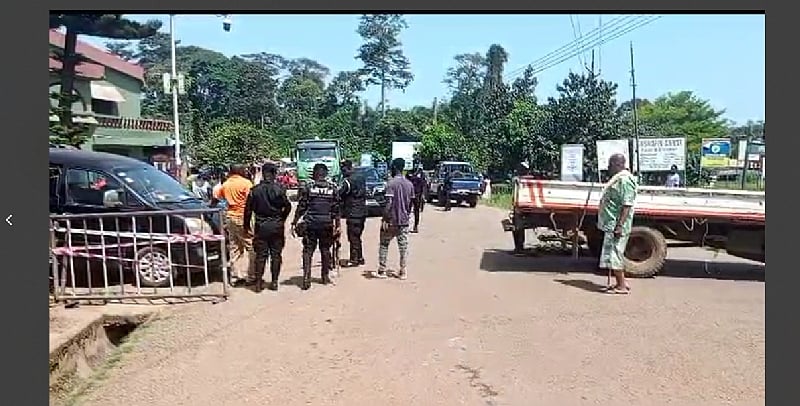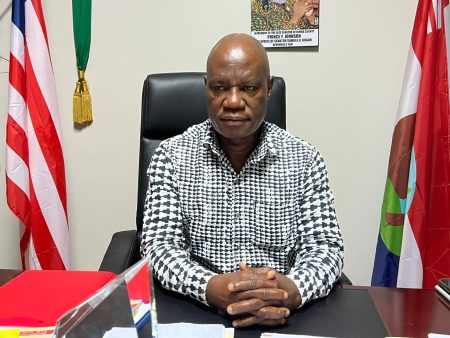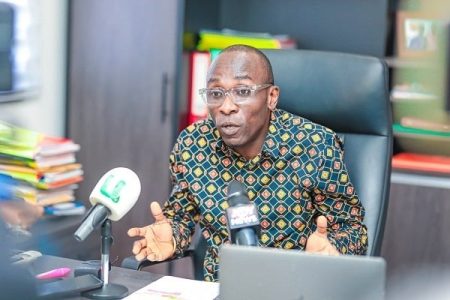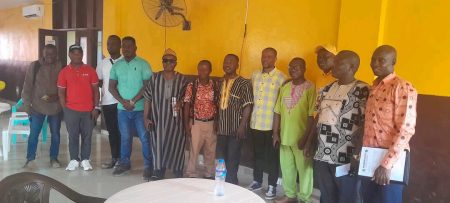A violent confrontation unfolded at the Abetifi Palace in the Kwahu Traditional Area as six individuals were hospitalized following an attempted destoolment of the acting President of the area, Kwahu Adontenhene Akyemfour Asiedu Agyemang III. The situation began to unravel when Obaapanyin Yaa Asantewaa, who claimed to be the chief’s wife (Abrewatia), appeared in Abetifi accompanied by a contingent of armed men. Initially mistaken for National Security operatives, this group supported Yaa Asantewaa in her aim to detain the acting chief. This assertion of authority over traditional leadership sent ripples through the local community, raising tensions.
The series of events escalated rapidly when Yaa Asantewaa and her entourage forcibly removed Akyemfour Asiedu Agyemang III from the palace and transported him to a nearby older palace. Once there, Yaa Asantewaa proceeded to conduct traditional rites aimed at destooling him. Among these rites was a sacrificial act, involving the slaughtering of a sheep—a tradition believed to invoke the spirits in the process of elevating or displacing a chief. This action garnered significant attention, with news quickly spreading throughout the community and inciting protests among the local youth, who armed themselves with machetes to defend their acting leader.
As tensions mounted and the mood boiled over, local law enforcement stepped in to deescalate the situation. Support from a team of police and military personnel proved critical in preventing further violence. The community’s response was swift; traditional leaders quickly organized their own rituals to reinforce Akyemfour Asiedu Agyemang III’s legitimacy. These rites served not only to reaffirm his status as the rightful chief but also to restore order within the Abetifi Palace. This counteraction, rooted deeply in traditional authority, calmed the agitated youth and high emotions that had taken hold.
In the wake of the violent altercation, authorities took immediate steps to address the crisis. The police launched an investigation into the incident, with a focus on Yaa Asantewaa and her armed followers. As tensions remained high, local police took precautions to safeguard Yaa Asantewaa and her group during their transfer to the police station, where they would be held for their protection as well as to ensure community safety. The intricate dynamics of power and traditional authority were vividly illustrated through this conflict, highlighting the intersections of respect for leadership and community response to perceived injustices.
The unfolding crisis not only drew attention to the power struggles within the Kwahu Traditional Area but also demonstrated the extent to which traditional rites and cultural practices influence social order and leadership. The attempted destoolment and the subsequent community mobilization in defense of their chief illuminated the strong ties residents have with their traditional institutions. The community’s swift rallying around Akyemfour Asiedu Agyemang III underscored the importance of cultural leadership in times of unrest, signaling an inherent resistance to challenges against established authority.
As investigations continue, the incident has broader implications for peace and stability within the Kwahu area. The violent attempt to destool a chief reveals vulnerabilities within the social structure, raising questions about the legitimacy of traditional claims and the response of modern law enforcement. As the community heals from the physical and emotional scars of this confrontation, the role of traditional leaders, the influence of armed groups in local disputes, and the impact of swift law enforcement intervention will be critical points for dialogue and understanding moving forward. The outcome of this incident could set a precedent for how disputes are handled in the region and may prompt reevaluations of the ways traditional authority is recognized and respected within contemporary Ghanaian society.














